Peer pressure is a powerful force. You probably remember experiencing it yourself. It can take tremendous strength of will to say no in the face of your peers urging you to do something. If you have a teenage son or daughter, remembering what peer pressure was like might keep you up at night. The good news is that you have the potential to be the most powerful influence in the lives of your children. If you take the time to help your teen understand the dangers of risky behaviors, keep open communication and get to know your teen, you can help her successfully resist peer pressure.
What Is the Role of Peer Pressure in Adolescence?
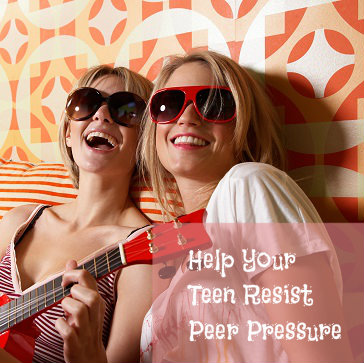 It turns out that peer pressure is normal and that it’s not always a negative thing. Teens are learning how to become adults by learning how to fit in with peers. While always conforming to the standards of others is not good, neither is standing out all the time. To grow into adults that contribute in meaningful ways, teens need to learn to strike a balance. They need to fit into social groups while also learning to make their own decisions.
It turns out that peer pressure is normal and that it’s not always a negative thing. Teens are learning how to become adults by learning how to fit in with peers. While always conforming to the standards of others is not good, neither is standing out all the time. To grow into adults that contribute in meaningful ways, teens need to learn to strike a balance. They need to fit into social groups while also learning to make their own decisions.
We tend to think of peer pressure among teens as always leading to dangerous behaviors, such as having sex, trying drugs, drinking or shoplifting. These are the sorts of incidences in which peer pressure is negative. On the other hand, your teen may be pressured by friends to go out when she is feeling down after a breakup, or they may pressure her to join extracurricular activities with them. These are positive pressures. If you can help your teen to understand the difference between positive and negative peer pressure, she will start to make better choices.
How Can You Help Your Teen Recognize And Resist Negative Pressure?
Your teen’s ability to recognize what is right and what is wrong begins with you. By sharing and demonstrating your own values, you pass them down her. If you talk to your teen about what you expect of her and what you value, your influence will be more important than that of her peers. It can be easy to lose sight of this fact during the teen years. The time your child spends with her friends can make you begin to feel as if your opinions no longer matter, but it isn’t true.
Sharing your values with your child will help her to recognize the difference between positive and negative peer pressure, but she also needs to be able to resist the latter. One of the most important things to do is to cultivate open lines of communication. When your teen knows that she can talk to you, she will bring her issues to you for discussion. If you don’t know that she is experiencing peer pressure, you can’t help her.
When you do talk to your teen about what is troubling her, give her suggestions for how to say no. Encourage her to stick with friends who have the same values. There is strength in numbers. Cultivate her self-esteem so that she feels confident being assertive in pressure-filled situations. Self-esteem comes from being able to accomplish goals and by being good at things, so encourage her to get involved in activities she enjoys and is good at. This could be sports teams, academic clubs, theater groups or any other healthy activity.
Peer pressure may be a powerful force, but good parenting is even stronger. Develop a good relationship with your teen that involves open communication and you will help her resist making bad choices based on pressure from her peers.
Learn More About How To Combat Peer Pressure
03 Feb 2014
How To Have The Marijuana Talk With Your Child
Marijuana is in the news a lot these days. Nearly half of all states have legalized medical marijuana. Two states now allow for recreational use of the drug. And yet, this substance is still illegal across the country according to federal law. There are many contradictions and confusions related to cannabis. Is it safe to use? Can it really help treat illnesses? When your child starts asking these questions, be sure you have the right answers. And consider having a talk about this controversial subject before your child gets the wrong answers at school.
Is Marijuana Safe?
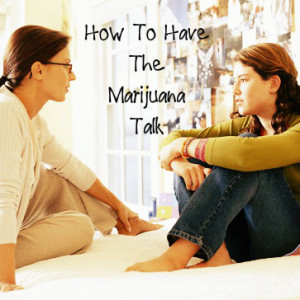 Attitudes regarding marijuana have shifted considerably in this country. As legalization for marijuana has occurred, many people have begun to assume that the drug must be safe. If it is considered a medicine, and is prescribed by doctors, it must be safe to use is a common misconception that you should correct for your child.
Attitudes regarding marijuana have shifted considerably in this country. As legalization for marijuana has occurred, many people have begun to assume that the drug must be safe. If it is considered a medicine, and is prescribed by doctors, it must be safe to use is a common misconception that you should correct for your child.
Marijuana is safer than many other drugs, but emphasize to your child that there are risks associated with using it. Smoking marijuana leads to impaired thinking and coordination, memory problems, and distorted perceptions in the short term. It can also cause paranoia, depression and anxiety. Using marijuana also increases the risk of having a heart attack and of developing a respiratory problem.
What Is Medical Marijuana?
Medical marijuana is no different from the drug that people use recreationally. It is simply marijuana that is prescribed by doctors to patients. Medical marijuana is most often smoked, but can also be consumed. Marijuana can be used to ease the symptoms of chemotherapy for cancer patients and those that are struggling with HIV and AIDS. It also helps people with the eye disease glaucoma and with multiple sclerosis. Chronic pain caused by any condition can be relieved by marijuana use.
Is Marijuana Addictive?
Another misconception that your child may have about this drug is that it is not addictive. The truth is that it does have the potential to lead to dependence, although the risk is much less than other substances, like cocaine, heroin, and even tobacco and alcohol. Make sure your child understands that addiction is always a risk when using a mind-altering substance.
Can You Get In Trouble For Using Marijuana?
Be sure that your child understands very clearly that even in states where marijuana has been decriminalized to any extent that it is illegal everywhere for anyone under the age of 21 to use marijuana. The exception to this rule is if a young person has a medical need for the drug. Just because marijuana is becoming legal in some places does not mean that teenagers can use the drug without consequences.
Isn’t Everyone Smoking Marijuana?…Maybe Not
The prevalence of marijuana in public discussion may make your child feel as if everyone is using this drug. It is important for your child to understand that this is not true. The vast majority of people, adults and teens, choose not to use marijuana. Among teenagers, fewer than eight percent report using the drug in the past month. Among people of all ages, this number drops to seven percent. The perception that everyone is doing something is powerful, so emphasize to your child that this is not the case with marijuana.
Provide The Answers About Marijuana Before Your Child Asks
Talking to your child about drugs is important and could be life-saving. With marijuana in the public consciousness and with perceived risk so low among young people, it is crucial that you have the answers your child needs to hear. Don’t wait for him to ask you. Start the conversation now and be sure that your child hears about this drug from you and not from his peers.
Read More About Why You Should Believe That Marijuana Is Dangerous
Emotion regulation skills are the skills that people rely on to process their emotions and control their reactions to both everyday circumstances and extraordinarily stressful circumstances. Broadly speaking, people who lack fully developed forms of these skills have increased risks for getting involved in drug use and eventually developing significant drug-related problems. In a study published in September 2013 in the journal Drug and Alcohol Dependence, researchers from four U.S. institutions examined the interaction between emotion regulation and drug-related risks on a more detailed level. These researchers identified specific emotion-processing styles that can boost or lower a person’s chances of using and abusing drugs.
Range Of Emotions And Emotion Regulation
 All healthy human beings experience a range of emotions. Some of these emotions, commonly referred to as positive emotions, tend to support a sense of well-being and increase a person’s ability to interact well with others and maintain a fruitful daily routine. Examples of emotions commonly viewed as positive include love, joy, interest, hope, gratitude and certain forms of pride. Other emotions, commonly referred to as negative emotions, tend to destabilize a sense of well-being, decrease the quality of a person’s social interactions and make it more difficult to establish an effective routine. Examples of emotions commonly viewed as negative include hatred, anger, jealousy, sadness, helplessness and hopelessness.
All healthy human beings experience a range of emotions. Some of these emotions, commonly referred to as positive emotions, tend to support a sense of well-being and increase a person’s ability to interact well with others and maintain a fruitful daily routine. Examples of emotions commonly viewed as positive include love, joy, interest, hope, gratitude and certain forms of pride. Other emotions, commonly referred to as negative emotions, tend to destabilize a sense of well-being, decrease the quality of a person’s social interactions and make it more difficult to establish an effective routine. Examples of emotions commonly viewed as negative include hatred, anger, jealousy, sadness, helplessness and hopelessness.
Despite the rudimentary labeling of these various emotional states, healthy individuals typically experience a mixture of “positive” and “negative” emotions, and benefit from both in appropriate settings. Emotion regulation is the process that allows people to do such things as analyze their current emotional states, consciously or unconsciously make decisions to change their emotional states, integrate their emotions and thoughts, and use emotions to guide or modify behavior. However, not all people successfully use the regulation process to deal with their emotions in healthy ways. Instead, when they feel strong emotions (especially negative emotions), they lose the ability to control their reactions and enter a state called emotional dysregulation.
Emotional Dysregulation’s Impact On Mood
As a result of their problems with emotional control, people affected by emotional dysregulation develop a form of mood instability that manifests in two main ways. First, they experience unusual and erratic shifts between emotional states (i.e., mood swings), especially states that don’t normally appear together in a short span of time. Emotionally dysregulated individuals also tend to experience unusually intensified forms of emotion that appear out of context for a given situation.
Emotional Dysregulation’s Impact On Drug Use
In the study published in Drug and Alcohol Dependence, researchers from the University of Southern California, Drexel University, Temple University and Children’s Hospital Los Angeles examined the connection between emotional regulation abilities and drug use risks among teenagers and young adults between the ages of 16 and 25. They performed this examination by interviewing 560 people in this age group with a recent history of abusing prescription drugs such as opioid painkillers and sedative-hypnotic medications. The interviews also contained questions designed to identify the use of illegal/illicit drugs such as cocaine and heroin. The researchers decided to conduct their study because of the lack of available information on the connection between emotional coping styles and drug use patterns in the targeted age group.
Four Styles Of Emotion Regulation And Those Who Are More Likely To Use Drugs
After examining their data, the researchers found that the study participants had four distinct styles of emotion regulation: a suppressing style designed to avoid dealing with strong emotions; a coping style that relies on the intervention of others for its effectiveness; a coping style that relies on self-generated efforts; and a proactive style that seeks to change the situations that produce stress or unpleasant emotional states. They also found that two of these styles—emotional suppression and reliance on others to deal with strong emotions—are clearly associated with increased risks for developing dangerous patterns of prescription or illicit/illegal drug use. By comparison, people with a proactive style of emotion regulation, in particular, have relatively low risks for participating in these drug use patterns.
Hope For Future Treatments To Prevent Drug Abuse
The authors of the study published in Drug and Alcohol Dependence believe they are one of the first research teams to demonstrate that the use of certain emotional coping styles can increase any given individual’s chances of developing significant drug problems. They also believe that their work can form the basis for future research that ultimately provides a real-world improvement in the ability to treat and prevent drug abuse and drug addiction in teenagers and young adults.
Read More About If Inattention And Impulsivity Increases The Risks For Stimulant Abuse
Alcohol consumption is illegal for all teenagers in the U.S. Despite this fact, significant numbers of teenagers drink, and therefore expose themselves to a range of health risks and social problems of alcohol. In a study published in October 2013 in the Journal of Child & Adolescent Substance Abuse, researchers from the Pacific Institute for Research and Evaluation looked at the way young, alcohol-consuming teenagers alter their drinking patterns as they grow older. These researchers found that most young teens manage to avoid any increases in alcohol consumption over time, while a small but significant minority of young teens experience either moderate or heavy increases in their consumption levels.
Alcohol Consumption Rates In Young Teens
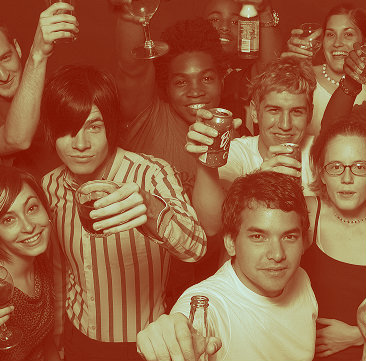 In collaboration with the University of Michigan, the National Institute on Drug Abuse tracks American teenagers’ level of involvement in substance use with an annual survey project called Monitoring the Future. According to results compiled from the 2012 version of this project, roughly 16 percent of all U.S. eighth graders consume alcohol at least once monthly. This rate follows a downward trend that first began in the mid-1990s.
In collaboration with the University of Michigan, the National Institute on Drug Abuse tracks American teenagers’ level of involvement in substance use with an annual survey project called Monitoring the Future. According to results compiled from the 2012 version of this project, roughly 16 percent of all U.S. eighth graders consume alcohol at least once monthly. This rate follows a downward trend that first began in the mid-1990s.
Figures gathered from Monitoring the Future also indicate that roughly 6 to 7 percent of all eighth graders in the U.S. participate in a dangerous form of consumption called binge drinking in any given two-week period. Binge drinking gets its name because participants binge on enough alcohol (typically, five drinks or more for boys and four drinks or more for girls) to become legally drunk in two hours or less.
Risky Behaviors Associated With Early Alcohol Consumption
Alcohol consumption has a strongly negative impact on teenagers, especially young teenagers below the age of 14, the National Institute on Alcohol Abuse and Alcoholism reports. Examples of the risks associated with drinking at this early age include higher rates of involvement in car crashes and other accidents, higher risks for homicide and suicide, higher rates for victimization in violent criminal acts such as assaults and rapes, increased chances of participation in disruptive conduct while in school, increased chances for poor academic results, an earlier onset of participation in sexual activity and increased risks for the practice of unsafe sex.
In addition, teen boys and girls who drink before the age of 14 tend to participate in binge drinking rather than moderate alcohol consumption. Critically, they also become alcoholics fully four times more frequently than people who don’t drink until they reach legal age.
Changes In Consumption Over Time
In the study published in the Journal of Child & Adolescent Substance Abuse, the Pacific Institute researchers looked at the ways in which young teenagers change their alcohol intake patterns as they grow up. The researchers also looked at the factors that help predict an increase in alcohol consumption among young teens. They undertook their project because only a few prior research groups had examined drinking patterns in this particular age group. All told, the study included 5,903 middle school teens. The researchers began tracking these teens when they were sixth graders and continued to track them through the eighth grade.
After completing the study’s primary phase, the researchers found that there are four emerging patterns of alcohol intake in middle school teenagers. Slightly less than 50 percent of all teens in this age group avoid drinking altogether or only drink on fairly rare occasion. Slightly more than 29 percent of all middle school teens initiate experimental alcohol use and continue to drink, but only increase their consumption levels to a minor extent over time. Fifteen percent of all middle schoolers start drinking significantly earlier than their alcohol-using peers, but still manage to keep their intake levels low. Slightly more than 6 percent of all children in this age group initiate alcohol use, and then fairly quickly begin consuming enough alcohol to rank as “heavy” drinkers.
Underlying Factors Of Teen Alcohol Use
The researchers concluded that the single biggest factor in forming any given young teen’s alcohol use pattern is his or her level of belief in the ability to control his or her rate of alcohol consumption. Young teens who believe they can control their drinking-related behaviors tend to do so, while those who don’t believe they can control their drinking tend to experience a spike in intake. Other factors identified as contributors to a young teenager’s alcohol intake pattern include the relative level of peer pressure he or she experiences for or against drinking, as well as the relative level of positive or negative feelings he or she has toward the effects and benefits of drinking.
Learn More About Detoxing From Alcohol And Gain Your Life Back!
18 Nov 2013
E-Cigarettes Secretly Used To Hide Drug Use
The e-cigarette is a modern invention and an alternative to tobacco cigarettes. They were designed to allow people to smoke and to get nicotine into the bloodstream without inhaling all of the toxins found in tobacco. E-cigarettes may be helping people to quit smoking, and because they do not produce actual smoke, they may also allow people to get their nicotine without affecting the people around them.
On the surface, it seems that e-cigarettes are a great invention that can help people. Unfortunately, there are downsides to these fake cigarettes, not least of which is the fact that they can be used to smoke illegal drugs, like marijuana. Because of the way they work, someone can smoke pot using an e-cigarette without being detected.
The E-Cigarette Revolution
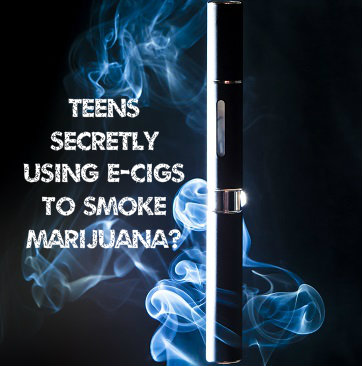 An e-cigarette is different from a traditional cigarette in that it does not use tobacco. Instead, it uses batteries and a liquid solution of nicotine. The battery heats and vaporizes the solution so that the user inhales and exhales vapors, rather than smoke. Because nicotine is the only ingredient, the user is also not inhaling all of the additives in tobacco that are so harmful, such as tar, acetone and arsenic.
An e-cigarette is different from a traditional cigarette in that it does not use tobacco. Instead, it uses batteries and a liquid solution of nicotine. The battery heats and vaporizes the solution so that the user inhales and exhales vapors, rather than smoke. Because nicotine is the only ingredient, the user is also not inhaling all of the additives in tobacco that are so harmful, such as tar, acetone and arsenic.
Although nicotine is still a drug, and one that is harmful and addictive, smoking an e-cigarette is much less dangerous than smoking tobacco cigarettes. It is also less harmful to others around the smoker because there is no secondhand smoke. Without the offensive fumes, it may be possible for people to smoke using e-cigarettes in areas that are normally restricted to smokers.
For the above reasons, e-cigarettes are set to become big sellers in the U.S. and elsewhere. Some experts are even predicting that they will start to outsell real cigarettes within a decade. E-cigarettes are already big business in Europe. The European Parliament recently rejected a proposal to regulate them as medical devices, which would have meant tight restrictions on sales.
E-Cigarettes Being Used To Smoke Marijuana
Although e-cigarettes may have been created as healthier, alternative delivery devices for nicotine and to help smokers kick the habit, clever drug users have already crafted them for different uses. The cartridge of liquid nicotine solution that goes into an e-cigarette can easily be replaced by any liquid. Any substance can be vaporized and inhaled using one of these devices.
Most commonly, abusers are using a cartridge with a liquid solution of THC, the main psychoactive substance found in marijuana. With liquid THC in an e-cigarette, a person can get high and yet appear to be legally inhaling legal, nicotine vapors. The same property of e-cigarettes that allows users to smoke without offending those around them, allows for covert use of illicit drugs. The vapors produced by the e-cigarette are odorless. A person can get high without arousing suspicions.
Teens Smoking Marijuana With No Recognizable Odor
While an adult covertly smoking pot is a concern, a bigger one is the use of marijuana by teenagers. As the presence of e-cigarettes proliferates, teens are finding that they make an excellent vehicle for smoking pot. Smoking marijuana produces a characteristic odor that clings to clothes, hair and fingers. With e-cigarettes, a teen can inhale liquid THC, get high, and never give off the usual signs. Parents who are concerned that their teens may be using marijuana will have to be more vigilant and look for other signs of intoxication.
E-Cigarettes Targeting Young People?
Another concern regarding teens and e-cigarettes is that these new devices may be targeting young people. E-cigarettes can be sold with different types of nicotine cartridges with flavors like strawberry, peach and grape. They are also sold online, which makes it easier for kids to get a hold of them. If kids start using these devices at a young age, they may be more inclined to try other substances. In other words, e-cigarettes may become the new gateway drug. The problem has already begun, as statistics indicate that the number of middle and high school students using e-cigarettes is rising.
It seems that e-cigarettes have a place in our modern world. They allow adults to use a legal substance in a way that is less harmful than cigarettes. They also help those who want to quit the habit of smoking. On the other hand, e-cigarettes pose a big problem. Until we can figure out how regulate them fairly, or how to detect illegal drugs being used in e-cigarettes, parents and other adults should be aware of the possibility that they are being abused by teens.
Read About Smoking Marijuana And The Future Effects On Teens
11 Nov 2013
Meth Addiction And The Effects In Teens
Fans of the hit crime drama Breaking Bad may have become familiar with the dangers of methamphetamine use. However, as a parent, you may have questions about methamphetamine abuse in teenagers and whether it requires drug rehab treatment. Surveys suggest that 2 to 3.5% of adolescents have used methamphetamines [1]. Also called “speed” or “glass”, it’s a highly addictive stimulant.
How Meth Works
Methamphetamine – or “meth” for short – is a type of amphetamine, a drug that acts on the body’s central nervous system. The drug works by increasing dopamine levels within the brain to very high levels. Dopamine is the brain chemical that’s linked to pleasure, reward, motivation, and also motor function. When dopamine levels skyrocket, as they do during meth use, the user experiences a pleasurable rush that is often compared to euphoria.
While there are several types of amphetamines, meth is generally considered the most potent. The drug can be snorted, injected, or taken orally. Some abusers use a method called parachuting, which involves crushing a pill and then rolling the powder into a piece of tissue or toilet paper. The entire package – tissue and all – is then swallowed, delivering what’s believed to be a stronger, faster high because the pill’s outer protective layer has been destroyed.
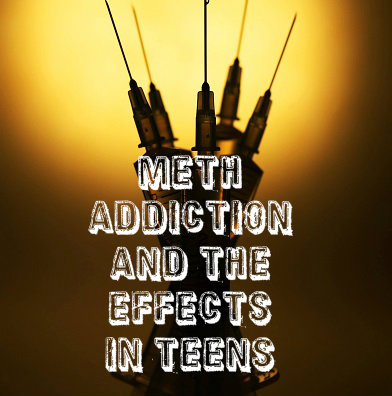 Teen meth addicts will typically use daily or nearly daily. Addiction requiring drug rehab treatment can develop quickly, sometimes within just a few uses. Chronic abuse of the drug leads to tolerance. As one’s tolerance level increases so does the amount of the drug that’s needed in order to achieve the euphoric high.
Teen meth addicts will typically use daily or nearly daily. Addiction requiring drug rehab treatment can develop quickly, sometimes within just a few uses. Chronic abuse of the drug leads to tolerance. As one’s tolerance level increases so does the amount of the drug that’s needed in order to achieve the euphoric high.
Effects Of Meth
Since meth is a stimulant, like cocaine, a teen will experience immediate physical effects, even when the drug is taken in small amounts. Meth users experience increased heart rate and respiration, irregular heartbeat, high body temperature, decreased appetite, inability to sleep, and increased physical activity.
An adolescent with a long-term meth addiction can experience more serious effects. Anxiety, confusion, and extreme weight loss are common. Many develop severe dental problems, such as tooth decay and loss, because the drug reduces output of saliva, which normally protects the mouth, and drug users often have poor dental hygiene.
Teen meth addicts are also at risk because the drug enhances the sex drive. Several studies have found that youth, especially females, who use meth are more likely to engage in risky sexual behaviors [2]. This potentially leads to unsafe sexual practices, including having sex without protection. Research has found a strong association between meth users and sexual risk-taking. A study of adults using meth found they were 1.7 times more likely to have gonorrhea and twice as likely to have chlamydia [3].
Chronic methamphetamine abusers might experience serious psychotic symptoms, including hallucinations, delusions, or paranoia. This can lead to physical problems as well. For instance, a meth user might scratch and gouge at their skin to remove “bugs.” Auditory hallucinations can be particularly dangerous if the addict believes “voices” are commanding him or her to harm others, a symptom that makes drug rehab treatment that much more important.
Meth use in teens can also cause permanent brain damage. Research shows that chronic use causes structural and functional changes to brain areas linked to memory and mood [4, 5]. In addition, brain imaging has shown that meth use changes the dopamine system in a way that reduces verbal learning and motor skills [6]. Using the drug over time also disrupts the body’s normal production of dopamine; as a result, chronic users show severe mood swings.
Signs Of Meth Abuse In Teens
- Euphoric moods (may appear unusually happy)
- Paranoia
- Reduced appetite
- Incessant talking
- Rapid weight loss
- Dilated pupils
- Dry, itchy skin
- Skin sores
- Intense mood swings
- Anxiety, nervousness
- Shaky hands
- Violent or aggressive behavior
- Excessive sweating
Symptoms can become worse as a teen’s meth addiction deepens. For instance, a meth addict often appears undernourished or even sick. He or she may have frequent mood swings, abruptly switching from chatty and friendly one moment to aggressive and hostile the next.
Treatment For Meth Addiction
Due to the serious short-term and long-term health risks, including brain damage and even death, meth addiction in adolescents requires immediate drug rehab treatment. Meth abusers can experience intense withdrawal symptoms, including severe agitation, anxiety, sleeplessness, and strong urges to use. Since withdrawal symptoms can be so powerful, teens should detox in a treatment center where they can be medically monitored.
After the drug is out of the body, your teen will start a treatment plan that will likely have several components based on his or her needs. Currently, there are no approved medications to treat methamphetamine addiction. However, rehab centers have a number of therapies for helping adolescents recover. For example, an addictions specialist may recommend cognitive behavioral therapy. This particular type of therapy helps teens learn more about the factors, such as negative emotions, irrational thoughts, or unhealthy behaviors, that contribute to their drug use. This therapy also teaches them how to deal with those factors in a drug-free way. Contingency management may also be beneficial in a drug treatment program. It provides tangible incentives, such as movie tickets or cash, for drug-free urine samples.
Alternate Therapies For Addiction
Other therapies may help your teen as well. For example, animal-assisted therapy, which involves the use of animals like dogs or horses, can be especially powerful. This treatment approach can help addicted teens reduce anxiety, build self-confidence, and develop trust. Talk with an addiction specialist to learn more about the benefits of animal-assisted therapy.
Family education and counseling will also be essential for guiding your teen through recovery. Educational sessions help parents and family members better understand the nature of addiction. They also show ways to help an addicted teen stay free of drugs. In family counseling, a therapist works with family members to pinpoint and resolve conflicts and communication issues, including those that have played a role in your teen’s decision to use drugs. Family therapy can play an important role in helping your teen avoid a relapse down the road.
Meth Affects The Brain’s Pleasure Center Long After Use
Treating an addiction to meth is challenging, in part, because the brain’s ability to produce dopamine is hampered for up to 6 months or more after drug use stops. As a result, addicts may be unable to experience pleasure. This can make it difficult for them to find enjoyment in even simple activities like spending time with friends, seeing a movie, or relaxing on the beach. This lack of positive emotion can compel many teens to start using again, just so they can feel some form of pleasure.
Yet, despite the challenges, adolescents can fully recover from a methamphetamine addiction. If you suspect or know that your teen is abusing meth, consult a drug rehab treatment as soon as possible – preferably one that is skilled in handling meth abuse and addiction in teens. The staff will work with you to lay out a plan for recovery that gives your teen the best chance for success.
Read More About What Meth Use Can Do To You
References:
[1] http://www.drugabuse.gov/drugs-abuse/methamphetamine
[2] http://www.biomedcentral.com/1471-2431/8/48/abstract
[3] http://www.healio.com/infectious-disease/hiv-aids/news/print/infectious-disease-news/%7B458a3b28-01a8-45ca-af13-dead2d781f8b%7D/methamphetamine-use-increases-risk-of-acquiring-hiv-stds-and-mrsa
[4] http://www.jneurosci.org/content/24/26/6028.long
[5] http://www.ncbi.nlm.nih.gov/pubmed/14706946
[6] http://www.ncbi.nlm.nih.gov/pubmed/11229977
29 Oct 2013
What Drives Teens To Try Ecstasy?
Ecstasy is a widespread term used for MDMA or Molly, an illegal amphetamine-like drug that also has some of the properties of hallucinogenic substances. In a study published in October 2013 in the journal Addiction, a multi-institution Australian research team examined some of the main factors that drive involvement in Ecstasy use. These researchers found that the critical factors include one’s social environment, previous history of drug use and level of a mental state called psychological distress.
Effects And Details Of Ecstasy
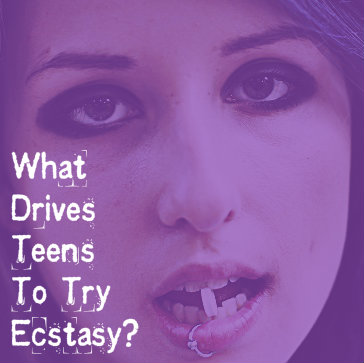 The full chemical name of Ecstasy (MDMA) is methylenedioxymethamphetamine. Outside of very limited situations, manufacturers produce this substance illegally, and distributors also usually sell it outside of legal channels. The stimulant effects of Ecstasy produce alertness and high levels of energy, while the hallucinogen-like effects of the drug produce an impaired ability to track the passing of time and unusual sensitivity to sound and touch. In addition, the drug commonly produces a benevolent mental outlook and an increased sense of social/spiritual connection with others. Ecstasy users typically view these physical and psychological changes as the drug’s desirable effects.
The full chemical name of Ecstasy (MDMA) is methylenedioxymethamphetamine. Outside of very limited situations, manufacturers produce this substance illegally, and distributors also usually sell it outside of legal channels. The stimulant effects of Ecstasy produce alertness and high levels of energy, while the hallucinogen-like effects of the drug produce an impaired ability to track the passing of time and unusual sensitivity to sound and touch. In addition, the drug commonly produces a benevolent mental outlook and an increased sense of social/spiritual connection with others. Ecstasy users typically view these physical and psychological changes as the drug’s desirable effects.
The use of Ecstasy is heavily associated with attendance at parties or dances that feature some form of electronic music; however, use can also take place in a range of other settings. The drug disrupts the body’s ability to regulate its internal temperature. In combination with the high, external body heat levels commonly found at the parties and dances where Ecstasy use occurs, this temperature dysregulation can lead to a dangerous, sometimes lethal condition called hyperthermia, which sets in when the body’s temperature rises above a sustainable level. Additional, major short-term health problems associated with Ecstasy intake include seizures and the development of significant heartbeat instability. Typically, people who take large amounts of the drug in a short span of time have the highest risks for experiencing these problems.
Psychological Distress And Ecstasy
Psychological distress is a term used to describe the presence of a range of emotional states that can undermine a person’s sense of mental well-being. Examples of these emotions include nervousness, hopelessness, restlessness and a “down” mood. By itself, psychological distress does not constitute a diagnosable mental health disorder. However, the underlying effects of a distressed psychological outlook are known contributors to the development of a number of diagnosable mental illnesses, including schizophrenia, bipolar disorder, anxiety disorders and major depression. According to figures compiled by the federal Substance Abuse and Mental Health Services Administration (SAMHSA), young adults experience psychological distress considerably more often than middle-aged adults or elderly adults, and also receive help for their condition less often than adults in these age groups.
Social Environment, Past Drug Use – Factors In Ecstasy Use
In the study published in Addiction, researchers from five Australian institutions used an assessment of 204 young adults between the ages of 19 and 23 to look at the factors that contribute to the start of participation in Ecstasy use. At the beginning of the study, none of these adults had used Ecstasy; however, over 40 percent of them had been offered the drug at some point. Six months later, the researchers identified the participants who had eventually accepted an offer to take Ecstasy and examined the reasons for this change in behavior.
After completing their assessment, the researchers concluded that factors related to an individual’s social environment played the most prominent role in the onset of Ecstasy use among the study’s young adults. Specific factors cited include having social interactions with a lot of people who already use the drug and attending the electronic music/dance events classically associated with Ecstasy use. The presence of the symptoms of psychological distress also played a meaningful role, as did a previous history of using marijuana or other forms of cannabis. However, these factors did not rise to the same level of importance as social environment.
How Study Results Can Help Ecstasy Drug Education
The authors of the study published in Addiction believe that their research can play a role in efforts aimed at curbing the use of Ecstasy and warning users about the drug’s major pitfalls. If successful, such efforts would likely have two components: a large-scale education campaign designed to reach broad segments of the population and a smaller, more targeted campaign designed to reach young adults and other individuals exposed to known risk factors for Ecstasy use.
The long-term risks for teens that abuse substances are increased likelihoods of adult addiction, developing certain cancers or heart disease and engaging in dangerous sexual behaviors that could result in contracting a sexually transmitted disease and/or an unplanned pregnancy. But there are also serious short-term risks, with the most serious being the increased likelihood of getting into a vehicular accident.
In addition, while many teens are advised not to drive a car while under the influence they may not use enough caution when considering the sobriety of another driver.
A recent study highlights the risk teens take when they drive a car or enter the car of a driver that is under the influence. Conducted by researchers at the Mailman School of Public Health at Columbia University, the study examined the risk of drug use and the risk of drug use combined with alcohol use and how such use impacted the risk of a fatal crash.
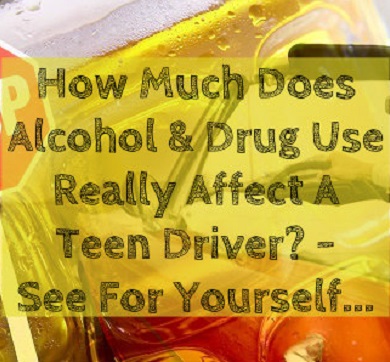
Drastic Increases In Fatal Crashes When Drugs Are Involved
The researchers found that there was a drastically increased risk of experiencing a fatal crash when drugs were involved in an accident, and this was particularly true when the drugs were used in addition to alcohol.
The study’s data was pulled from two national databases commissioned by the National Highway Traffic Safety Administration: the 2007 National Roadside Survey of Alcohol and Drug Use by Drivers and the Fatality Analysis Reporting System (FARS). FARS compiles investigation information for all vehicular crashes that resulted in a fatality within 30 days of the crash occurring on a public road.
This study is unique in its use of the two databases together to compile information about circumstances surrounding events, such as the individuals and vehicles involved.
The study, led by Guohua Li, MD, DrPH, professor of Epidemiology and director of the Center for Injury Epidemiology and Prevention, found that 31.9 percent of all drivers implicated in fatal crashes tested positive for at least one drug. Of those interviewed at roadside, 13.7 percent tested positive for at least one drug. Overall, drivers that test positive were three times more likely to be involved in a fatal car crash, with the highest risk associated with depressants followed by stimulants.
The study also showed that blood alcohol levels were increased in 57 percent of those involved in fatal crashes, while 8.8 percent of the roadside interviews had an elevated blood alcohol level. Approximately 20 percent of the fatal crash drivers tested positive for alcohol consumption and one or more additional drugs. Among the roadside interviews, 2.2 percent tested positive for alcohol and another drug.
Alcohol Increases Fatal Car Crashes By 13 Times!
The risk of involvement in a fatal car crash increased 13 times for those that tested positive for alcohol only, two times for those that were drug-positive and 23 times for drivers that were under the influence of both drugs and alcohol.
The authors of the study note that drugs may be detectable in a driver’s blood test that may not be causing impairment. In addition, the authors say that the study does not account for various levels of tolerance that may be exhibited among individual drivers, making it difficult to measure drug impairment.
Decreased Risks When Parents Talk With Their Teens
The findings highlight the importance of talking with teens about the risks of driving a vehicle while under the influence or entering a vehicle in which the driver has been using.
Parents that explain the risks and dangers can help their child make an informed decision.


